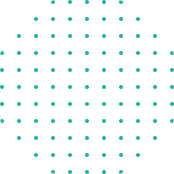Machine learning projects for biomedical engineering- Latest IEEE transactions
Overview of Bio-medical engineering projects:
Python and Machine learning projects for biomedical engineering involve applying machine learning algorithms and techniques to analyze and process data in the biomedical field. Examples include developing predictive models for disease diagnosis, analyzing bio signals, drug discovery, biomedical imaging analysis, and personalized medicine. These projects have the potential to significantly improve healthcare outcomes and require a multidisciplinary approach involving expertise in machine learning, computer science, and biomedical engineering.
TOP 20 Python based machine learning projects for biomedical engineering.
-
Predicting heart disease using machine learning
-
Brain tumor segmentation using deep learning.
-
Parkinson's disease detection using machine learning.
-
Detection of diabetic retinopathy using machine learning
-
Prediction of epileptic seizures using EEG signals and machine learning
-
Detection of Alzheimer's disease using machine learning
-
Analysis of electrocardiogram (ECG) signals for arrhythmia detection using machine learning
-
Prediction of breast cancer using mammogram images and machine learning
-
Automated detection of lung nodules in CT images using machine learning
-
Predicting survival rates in cancer patients using machine learning
-
Identification of cardiac arrhythmia using machine learning
-
Automatic classification of skin lesions using machine learning
-
Diagnosis of sleep apnea using machine learning
-
Analysis of fMRI data for schizophrenia detection using machine learning
-
Prediction of Parkinson's disease progression using machine learning
-
Automatic detection of COVID-19 from chest X-rays using machine learning
-
Classification of brain lesions in MRI images using machine learning
-
Development of personalized treatment plans for cancer patients using machine learning
-
Prediction of preterm birth using machine learning
-
Analysis of retinal images for glaucoma detection using machine learning
These projects involve a combination of machine learning techniques and biomedical engineering principles to address important medical problems. They offer great potential to improve patient outcomes and provide opportunities for students and researchers to apply their skills in a meaningful way, developers extensively use PYTHON for implementing biomedical projects.
FAQ’s
1) What tools are used to implement Python machine learning-based biomedical engineering projects?
There are several tools used to implement Python machine learning-based biomedical engineering projects. commonly used ones:
-
Python Programming Language: Python is a popular programming language for data science and machine learning, and it is widely used in biomedical engineering projects.
-
Jupiter Notebooks: Jupiter Notebooks are a popular tool for data exploration and analysis in Python. They allow developers to create interactive documents that combine code, text, and visualizations.
-
Scikit-learn: Scikit-learn is a machine-learning library for Python that provides a wide range of tools for classification, regression, clustering, and dimensionality reduction.
-
Tensor Flow and Keras: Tensor Flow and Keras are popular deep learning frameworks for Python that are used for neural network-based models in biomedical engineering.
-
Pandas: Pandas is a data manipulation library for Python that provides data structures for easy data analysis and manipulation.
-
Matplotlib and Seaborn: Matplotlib and Seaborn are visualization libraries for Python that are used to create visualizations and plots for data exploration and presentation.
-
OpenCV: OpenCV is a computer vision library for Python that is used for image and video processing in biomedical engineering projects.
Overall, these tools help developers to build effective machine-learning models and data analysis pipelines for biomedical engineering applications.
2) How to develop Python based bio medical engineering projects?
Steps to develop Python-based biomedical engineering projects:
-
Identify the problem: Identify a specific problem in biomedical engineering that can be solved using machine learning or data analysis.
-
Gather data: Collect or access relevant data for the problem you are trying to solve. This may involve obtaining data from publicly available sources, acquiring data from a research study, or using simulation or synthetic data.
-
Pre-process and clean data: Once the data is obtained, pre-process and clean it to remove missing values, outliers, and other anomalies that could negatively impact the analysis.
-
Choose appropriate machine learning techniques: Select the most appropriate machine learning techniques based on the problem and the data available. This could include supervised or unsupervised learning, classification, regression, clustering, or deep learning.
-
Develop and train the model: Develop a model using the chosen machine learning technique and train it on the pre-processed data. This may involve experimenting with different parameters and approaches to optimize the model's performance.
-
Evaluate the model: Evaluate the performance of the model using appropriate metrics and validation techniques to ensure that it is accurate and effective.
-
Implement and deploy the model: Once the model is developed and tested, implement it in a suitable environment, such as a web application or a mobile app, for use by clinicians, researchers, or patients.
Parkinson's disease (PD) is a neurodegenerative disorder, which is responsible for the deterioration of motor function due to loss of dopamine-producing brain cells i.e.neurons. Tremors, stiffness, slowness in movements, shaking, and impaired balance are some of the primary symptoms of PD. In this paper, two neural network based models namely, VGFR Spectrogram Detector and Voice Impairment Classifier have been introduced, which aim to help doctors and people in diagnosing disease at an early stage. An extensive empirical evaluation of CNNs (Convolutional Neural Networks) has been implemented on large-scale image classification of gait signals converted to spectrogram images and deep dense ANNs (Artificial Neural Networks) on the voice recordings, to predict the disease. The experimental results indicate that the proposed models outperformed the existing state of the arts in terms of accuracy.The classification accuracy on VGFR Spectrogram Detector is recorded as 88.1% while Voice Impairment Classifier has shown 89.15% accuracy.
Parkinson's disease is a progressive and chronic neurodegenerative disorder. As the dopamine-generating neurons in parts of the brain become damaged or die, people begin to experience difficulty in speaking, writing, walking, or completing other simple tasks. These symptoms grow worse over time, thus resulting in the increase of its severity in patients. In this paper, we have proposed a methodology for the prediction of Parkinson’s disease severity using deep neural networks on UCI’s Parkinson’s Telemonitoring Voice Data Set of patients. We have used ‘TensorFlow’ deep learning library of python to implement our neural network for predicting the severity. The accuracy values obtained by our method are better as compared to the accuracy obtained in previous research work.
Alzheimer’s Disease is a progressive and irreversible neurological disease and is the most common cause of Dementia in people of the age 65 years and above. Detection of Alzheimer’s disease at prodromal stage is very important as it can prevent serious damage to the patient’s brain. In this paper, a method to detect Alzheimer’s Disease from MRI using Machine Learning approach is proposed. The proposed approach extracts texture and shape features of the Hippocampus region from the MRI scans and a Neural Network is used as Multi-Class Classifier for detection of various stages of Alzheimer’s Disease. The proposed approach is under implementation and is expected to give better accuracy as compared to conventional approaches.
Abdominal CT scans have been widely studied and researched by medical professionals in recent years. CT scans have proved effective for the task of detection of liver abnormalities in patients. Computer-aided automatic segmentation of the liver can serve as an elementary step for radiologists to trace anomalies in the liver. In this paper, we have explored deep learning techniques first and foremost for the extraction of liver from the abdominal CT scan and then, consequently, to segment the lesions from a tumour-ridden liver. A cascaded model of convolutional neural networks is used to segment lesions once tumour has been detected in the liver by GA-ANN which has been fed textural liver features using LTEM for its classification procedure. A high DICE index has been obtained of 0.9557 for liver segmentation and 0.6976 for lesion segmentation.
Chest X-ray images (anterior-posterior) were selected from retrospective cohorts of paediatric patients of one to five years old from Guangzhou Women and Children’s Medical Centre, Guangzhou. The chest Xray imaging was performed as part of patients’ routine clinical care. For the analysis of chest x-ray images, all chest radiographs were initially screened for quality control by removing all low quality or unreadable scans. The diagnoses for the images were then graded by two expert physicians before being cleared for training the AI system. In order to account for any grading errors, the evaluation set was also checked by a third expert.
Here we demonstrate a CAD system for lung cancer classification of CT scans with unmarked nodules, a dataset from the Kaggle Data Science Bowl 2017. Thresholding was used as an initial segmentation approach to to segment out lung tissue from the rest of the CT scan. Thresholding produced the next best lung segmentation. The initial approach was to directly feed in the segmented CT scans into 3D CNNs for classification, but this proved to be in-adequate. Instead, a modified U-Net trained on LUNA16 data (CT scans with labeled nodules) was used to first de-tect nodule candidates in the Kaggle CT scans. The U-Net nodule detection produced many false positives, so regions of CTs with segmented lungs where the most likely nodule candidates were located as determined by the U-Net out-put were fed into 3D Convolutional Neural Networks (a vanilla 3D CNN and a Googlenet-based 3D CNN) to ultimately classify the CT scan as positive or negative for lung cancer. The vanilla 3D CNN produced a test set AUC of ??? and the Googlenet-based 3D CNN produced a test set AUC of ???. While performance of our CAD system is not state-of-the-art, current CAD systems in literature have several training and testing phases that each requires a lot of labeled data, while our CAD system has only three major phases (segmentation, nodule candidate detection, and malignancy classification), allowing more efficient training and detection and more generalizability to other cancers.
We are living in a post modern era and there are tremendous changes happening to our daily routines which make an impact on our health positively and negatively. As a result of these changes various kind of diseases are enormously increased. Especially, heart disease has become more common these days.The life of people is at a risk. Variation in Blood pressure, sugar, pulse rate etc. can lead to cardiovascular diseases that include narrowed or blocked blood vessels. It may causes Heart failure, Aneurysm, Peripheral artery disease, Heart attack, Stroke and even sudden cardiac arrest. Many forms of heart disease can be detected or diagnosed with different medical tests by considering family medical history and other factors. But, the prediction of heart diseases without doing any medical tests is quite difficult. The aim of this project is to diagnose different heart diseases and to make all possible precautions to prevent at early stage itself with affordable rate. We follow ‘Data mining’ technique in which attributes are fed in to SVM, Random forest, KNN, and ANN classification Algorithms for the prediction of heart diseases. The preliminary readings and studies obtained from this technique is used to know the possibility of detecting heart diseases at early stage and can be completely cured by proper diagnosis.
Currently, there are many people in the world suffering from chronic kidney diseases worldwide. Due to the several risk factors like food, environment and living standards many people get diseases suddenly without understanding of their condition. Diagnosing of chronic kidney diseases is generally invasive, costly, time-consuming and often risky. That is why many patients reach late stages of it without treatment, especially in those countries where the resources are limited. Therefore, the early detection strategy of the disease remains important, particularly in developing countries, where the diseases are generally diagnosed in late stages. Finding a solution for above-mentioned problems and riding out from disadvantages became a strong motive to conduct this study. In this research study, the effects of using clinical features.
Diabetes mellitus is a common disease of human body caused by a group of metabolic disorders where the sugar levels over a prolonged period is very high. It affects different organs of the human body which thus harm a large number of the body's system, in particular the blood veins and nerves. Early prediction in such disease can be controlled and save human life. To achieve the goal, this research work mainlyexplores various risk factors related to this disease using machine learning techniques. Machine learning techniques provide efficient result to extract knowledge by constructing predicting models from diagnostic medical datasets collected from the diabetic patients. Extracting knowledge from such data can be useful to predict diabetic patients. In this work, we employ four popular machine learning algorithms, namely Support Vector Machine (SVM), Naive Bayes (NB), K-Nearest Neighbor (KNN) and C4.5 Decision Tree (DT), on adult population data to predict diabetic mellitus. Our experimental results show that C4.5 decision tree achieved higher accuracy compared to other machine learning techniques.












